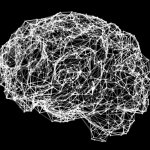Deep learning vs machine learning – Why the difference matters

- Machine learning vs deep learning — two subsets of artificial intelligence which have garnered a lot of attention in recent years
- Essentially, deep learning is a specialized subset of machine learning which, in turn, is a subset of artificial intelligence.
Artificial intelligence (AI), machine learning, and deep learning are the buzzwords of this century. Their wide range of applications has changed the applications of technology in a great many fields. Supposed experts might use these AI-affiliated terms widely and often interchangeably. The truth is that there is a vast difference between all of these.
Nowhere has AI had a greater impact in the early stages of the 21st century than in the office. In fact, machine learning technologies are driving productivity increases that have never been seen before. From workflow management tools to trend predictions and even the way brands purchase advertising, AI is changing the way we do business.
While AI is an umbrella term for any computer program that does something smart, to imitate intelligent human behavior. A subset of AI is machine learning while deep learning, on the other hand, is a subset of machine learning. In other words, all machine learning is AI, but not all AI is machine learning, and so forth.
Human hand in the machine
Machine learning, a subset of AI, serves to provide the machines with the ability to automatically learn and act based on previous experience. Machine learning involves the “implementation” of different algorithms including neural networks that help to solve problems.
In general, the learning process of these algorithms can either be supervised or unsupervised, depending on the data being used to feed the algorithms. Time and the right learning algorithms, make all the difference.
What about deep learning?
A subset of machine learning, deep learning structures the algorithms into multiple layers in order to create an “artificial neural network” (ANN). This neural network can learn from the data and make intelligent decisions on its own.
The design of such an ANN is inspired by the biological neural network of the human brain, leading to a process of learning that’s far more capable than that of standard machine learning models.
Today, deep learning is used in many fields. Self-driving cars and trucks, virtual assistants like Alexa, Siri, and Google Assistant, speech recognition systems, computer vision, robotic surgeries are all interesting applications of deep learning.
YOU MIGHT LIKE

Pandemic changes focus of machine learning projects
Deep learning vs machine learning
To put it simply, the key difference between machine and deep learning relates to the way the data is transported to the system. While machine learning operates based on how it was trained by humans, deep learning relies on artificial neural connections and doesn’t need human involvement.
Without the human training element, deep learning requires much more data than a traditional machine learning algorithm to function properly. Machine learning might work with a thousand data points, deep learning oftentimes only with millions.
Due to the complex multi-layer structure, a deep learning system needs a large dataset to eliminate fluctuations and make high-quality interpretations. At the end of the day, when it comes to deep learning vs machine learning, both present undeniable value in modern human life, but do not work equally to solve the same issues.









